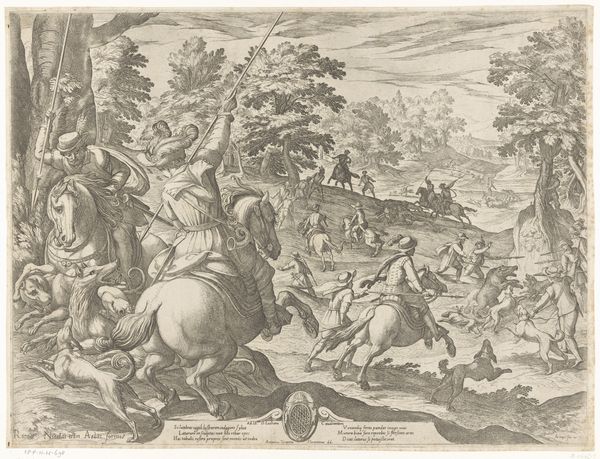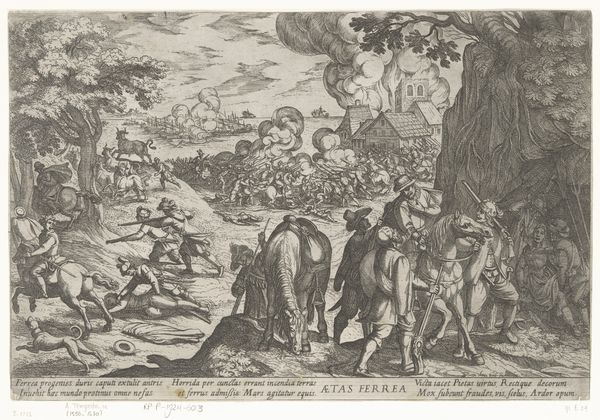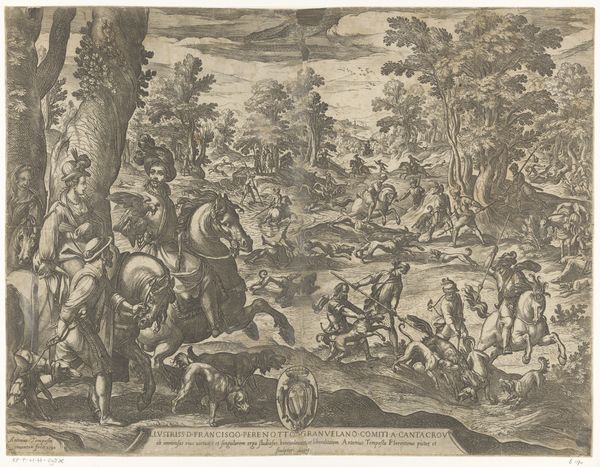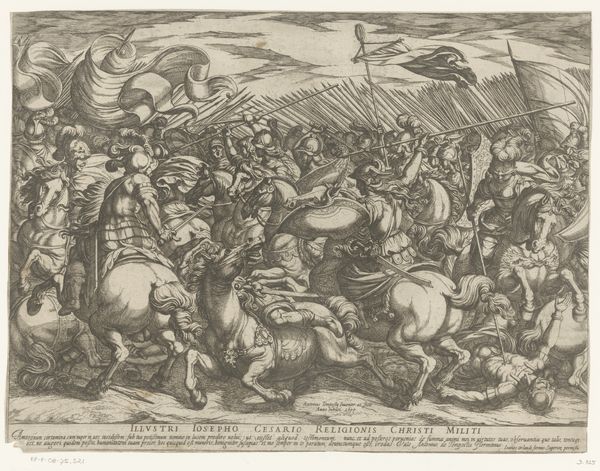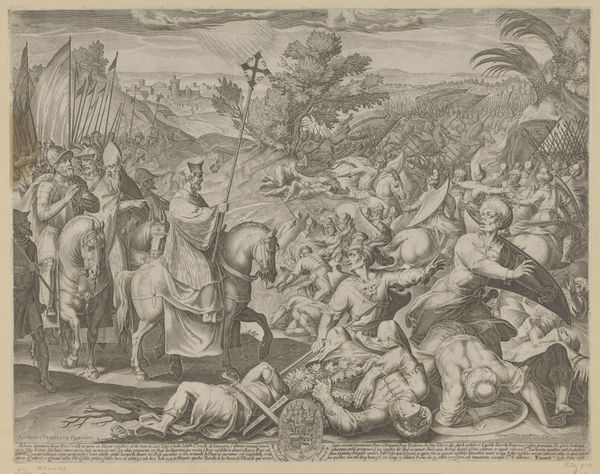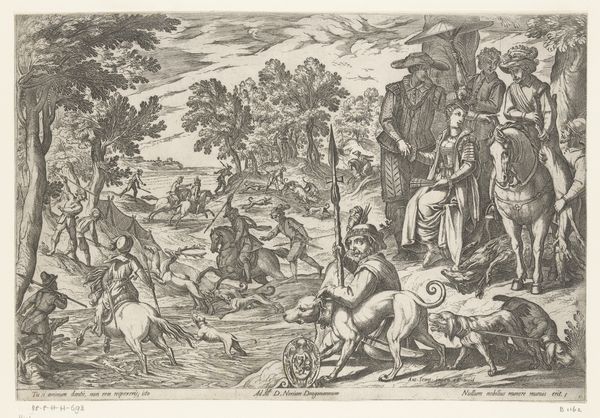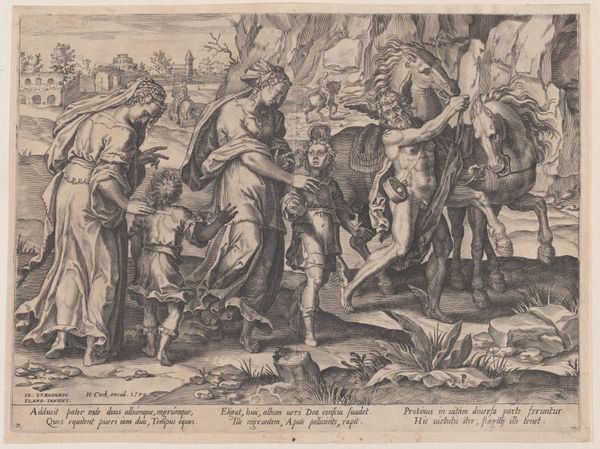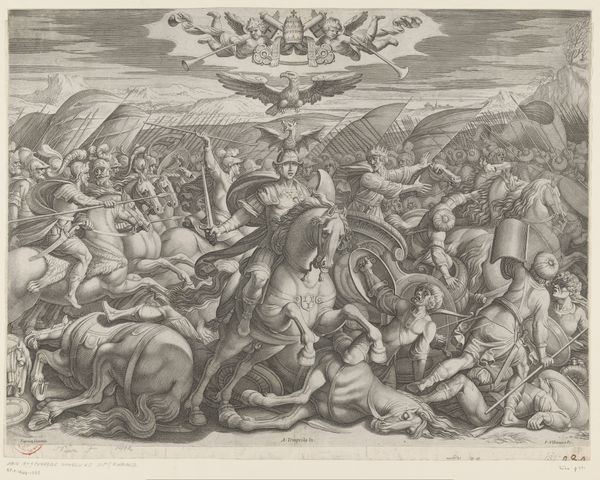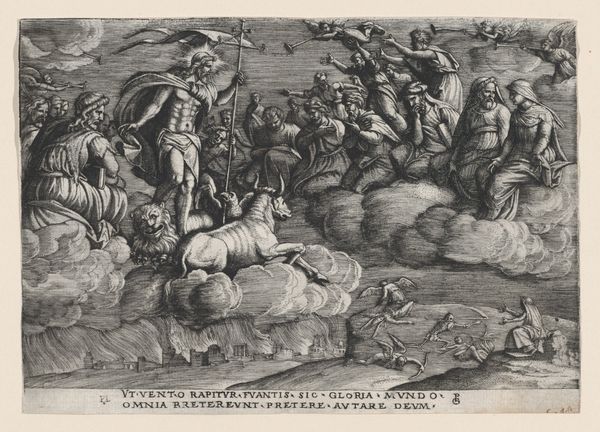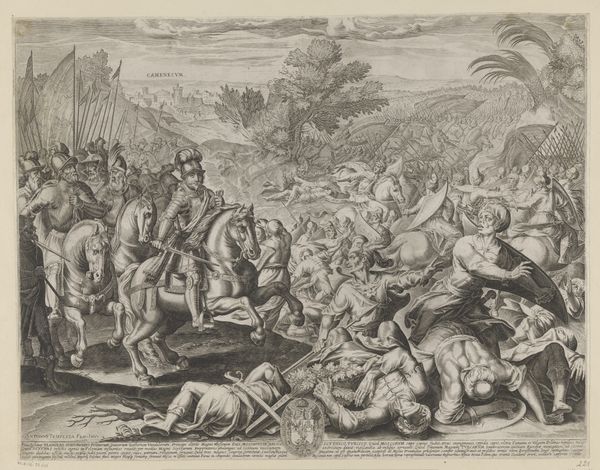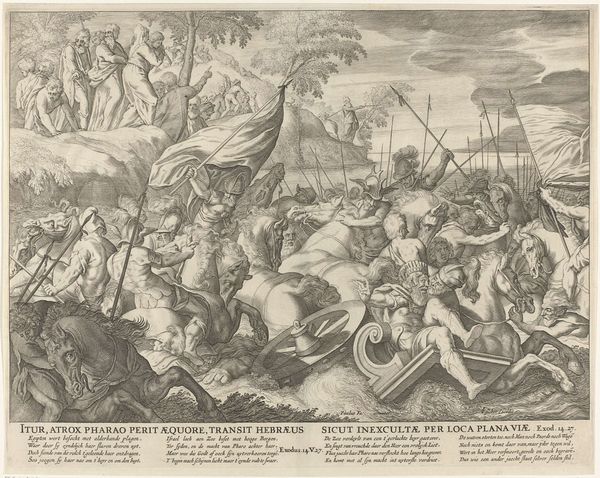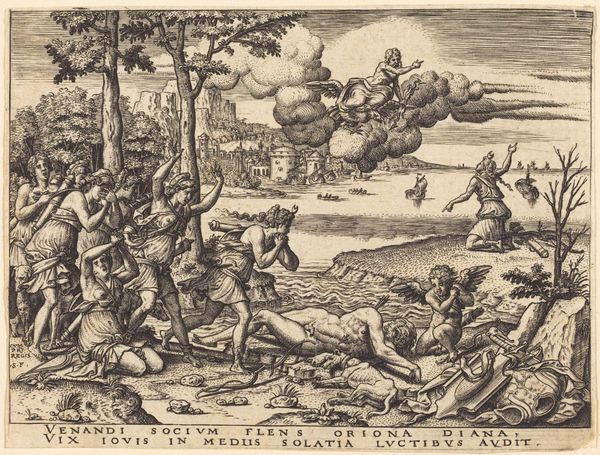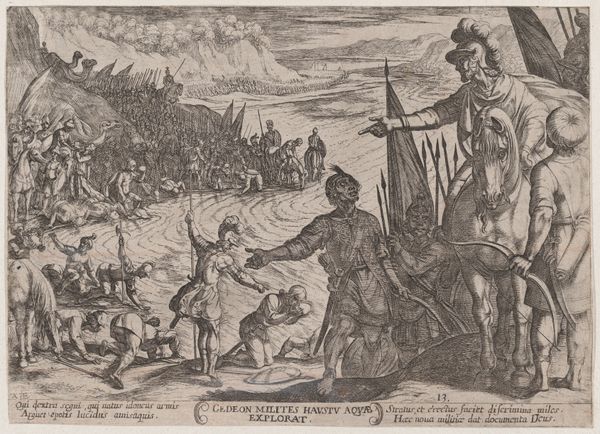
drawing, print, ink, engraving
#
drawing
#
ink drawing
#
narrative-art
# print
#
pen illustration
#
pen sketch
#
landscape
#
mannerism
#
figuration
#
ink
#
history-painting
#
engraving
Dimensions: height 430 mm, width 550 mm
Copyright: Rijks Museum: Open Domain
Curator: Look closely at this print titled “Jacht op leeuwen,” or "Lion Hunt," attributed to Antonio Tempesta and created sometime between 1565 and 1630. It’s an ink drawing. What strikes you? Editor: The density of the image is the first thing that stands out. So many figures densely packed, creating a feeling of chaos and energy. I am trying to discern what is happening amid so much detail. Curator: Indeed, Tempesta’s signature style lies in such dynamic compositions, often reflecting the Mannerist period’s taste for drama and complex narratives. The recurring lion hunt theme in art taps into primal symbols of power and conquest. Where does the violence depicted fit in a social context? Editor: Violence and status were indeed intrinsically intertwined during this era. Lions have long represented courage, nobility, even royalty, since antiquity, which are all culturally loaded terms. The act of hunting—and particularly hunting lions—carried layers of meaning far beyond mere sport. Curator: Exactly. In terms of its historical narrative, we might ask ourselves what the visual encoding of such dominance tells us about 16th-century European perceptions of power, both political and personal? Are these European lions or is it trying to exotize the "hunt" of colonized animals in some distant place? Editor: It's clear these lion hunts functioned as demonstrations of prowess, reinforcing societal hierarchies. Consider the image’s symbols of kingship, valor, and brute force: all feeding into a culturally sanctioned ideal. How did this visual language of dominion play out in other areas? Curator: Good question. Art of this era was inherently intertwined with broader power structures. This seemingly simple hunt touches upon complex relations between humans, animals, and dominion. Ultimately, it serves as a reminder that art doesn’t merely depict the world but actively shapes and perpetuates specific worldviews. Editor: This reminds us to decode the symbols within images carefully and to interrogate what cultural scripts these images reinforced for their intended viewers. Curator: Well said! The echoes of these cultural scripts are relevant today.
Comments
No comments
Be the first to comment and join the conversation on the ultimate creative platform.
